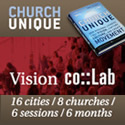Documented: The Decline of America’s Largest Denominations
- Posted by: Todd
- Posted on: Tue, February 24, 2009
- Viewed 90
- (3) comments so far
Here is the breakdown of the largest 25 church groups in the US: (You can read more here)
The Roman Catholic Church, 67,117,06 members, down 0.59 percent. (Ranked 1)
The Southern Baptist Convention, 16,266,920 members, down 0.24 percent. (Ranked 2)
The United Methodist Church, 7,931,733 members, down 0.80 percent. (Ranked 3)
The Church of Jesus Christ of Latter-day Saints, 5,873,408 members, up 1.63 percent .(Ranked 4)
The Church of God in Christ, 5,499,875 members, no change reported. (Ranked 5)
National Baptist Convention, U.S.A., Inc., 5,000,000 members, no change reported. (Ranked 6)
Evangelical Lutheran Church in America, 4,709,956 members, down 1.35 percent. (Ranked 7)
National Baptist Convention of America, Inc., 3,500,000 members, no change reported. (Ranked 8)
Presbyterian Church (USA), 2,941,412 members, down 2.79 percent (Ranked 9)
Assemblies of God, 2,863,265 members, up 0.96 percent. (Ranked 10)
African Methodist Episcopal Church, 2,500,000 members, no change reported. (Ranked 11)
National Missionary Baptist Convention of America, 2,500,000 members, no change reported. (Ranked 11)
Progressive National Baptist Convention, Inc., 2,500,000 members, no change reported. (Ranked 11)
The Lutheran Church - Missouri Synod (LCMS), 2,383,084 members, down 1.44 percent. (Ranked 14)
The Episcopal Church, 2,116,749 members, down 1.76 percent. (Ranked 15)
Churches of Christ, 1,639,495 members, no change reported. (Ranked 16)
Greek Orthodox Archdiocese of America, 1,500,000 members, no change reported. (Ranked 17)
Pentecostal Assemblies of the World, Inc., 1,500,000 members, no change reported. (Ranked 17)
The African Methodist Episcopal Zion Church, 1,400,000 members, down 3.01 percent. (Ranked 19)
American Baptist Churches in the USA, 1,358,351, down 0.94 percent. (Ranked 20)
Baptist Bible Fellowship International, 1,200,000, no change reported. (Ranked 21)
United Church of Christ, 1,145,281 members, down 6.01 percent. (Ranked 22)
Jehovah’s Witnesses, 1,092,169 members, up 2.12 percent (Ranked 23)
Christian Churches and Churches of Christ, 1,071,616 members, no change reported. (Ranked 24)
Church of God (Cleveland, Tenn.), 1,053,642 members, up 2.04 percent. (Ranked 25)
The 77th annual edition of the Yearbook of American & Canadian Churches, long a highly regarded chronicler of growth and financial trends of religious institutions, records a slight but startling decline in membership of the nation's largest Christian communions.
Membership in the Roman Catholic Church declined 0.59 percent and the Southern Baptist Convention declined 0.24 percent, according to the 2009 edition of the Yearbook, edited by the National Council of Churches and published by Abingdon.
The figures indicate that the Catholic church lost 398,000 members since the appearance of the 2008 Yearbook. Southern Baptists lost nearly 40,000 members.
Both membership figures were compiled by the churches in 2007 and reported to the Yearbook in 2008. The 2009 Yearbook also includes an essay by the editor, the Rev. Dr. Eileen W. Lindner, on the various ways churches count their members.
Neither figure is earth-shattering given the size of the churches. Roman Catholics comprise the nation's largest church with a membership of 67,117,016, and Southern Baptists rank second in the nation at 16,266,920.
But this year's reported decline raises eyebrows because Catholic and Southern Baptist membership has grown dependably over the years. Now they join virtually every mainline church in reporting a membership decline...
Comments
if you want a Globally Recognized Avatar (the images next to your profile) get them here. Once you sign up, they will displayed on any website that supports them.






Eric JAffe on Tue, February 24, 2009
I suspect they did not even factor in normal growth rates which globally are atleast 1.19% right now. WHich means that even if they are maintaining, they are actually declining as a percentage of the overall population.
In fast growing population areas of the US, if say the growth rate ina commnunity is 6%, a growing church needs to be hitting 10% to exceed the natural population growth rate.
So what those figures actually say is that those denominations are not making the impact they once did per capita.
Jan on Sat, February 28, 2009
As far as my denom, the decline I see is in churches that refuse to move forward, out of the 1950’s.
In our association of churches there is a schism between the progressive churches and the ones who insist hymns are the only way, we have to have pews and fish frys on Friday night. These same people want business type meetings, that are long, drawn out and frankly boring and a waste of time. These are the churches also that want to hold back those who are wanting to make changes, who want to worship together and plan outreach events, plant churches and engage in meaningful ministry with other churches.
The churches that are actively outward, engaging the culture around them (oh no I used THE buzz words!) and passionate about reaching the lost are growing. They are also seeing a momentum in youth ministry that is striking.
I don’t necessarily think a decline in a denomination is always a bad thing. It’s unfortunate, but it may mean simply that churches that have been petering out are finally gone.
Zeturf on Tue, June 23, 2009
Thanks for sharing
Page 1 of 1 pages
Post a Comment